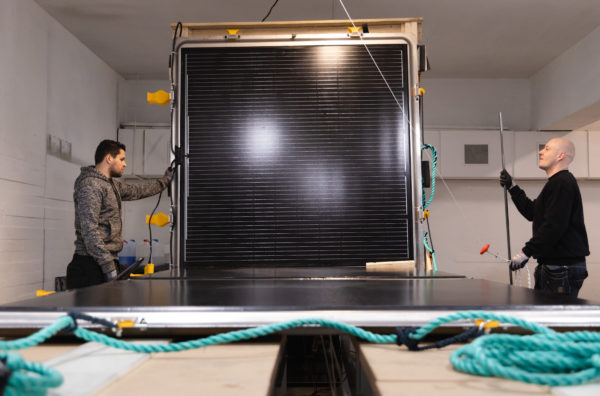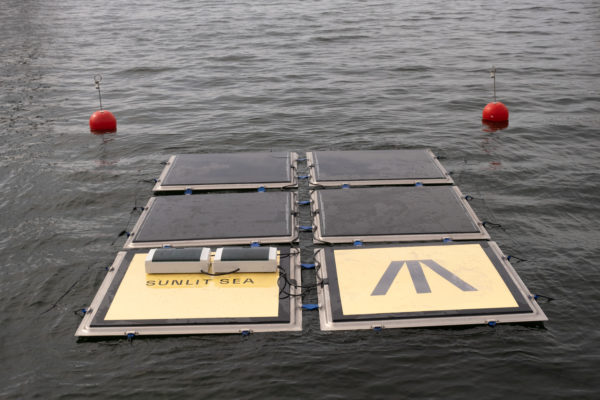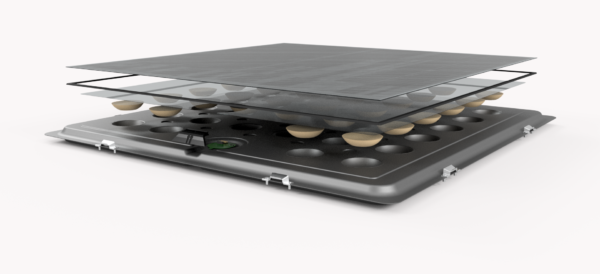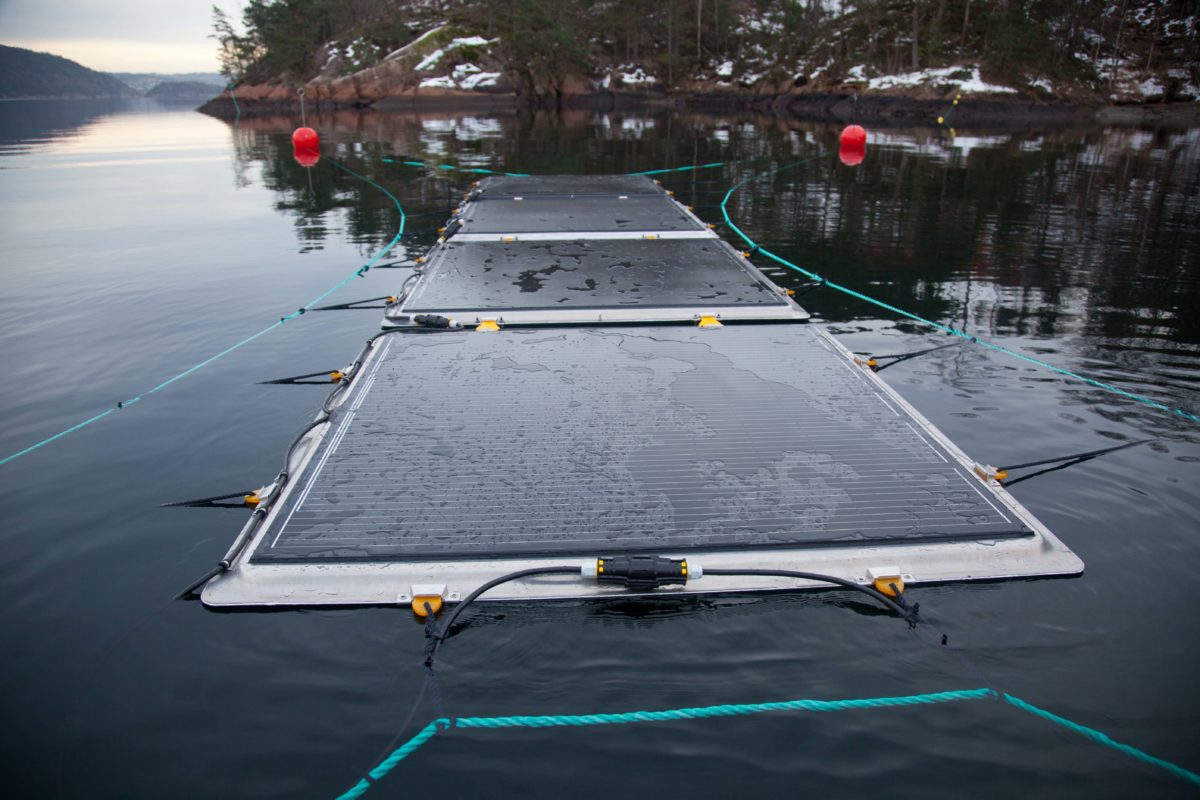Norwegian startup Sunlit Sea has developed a novel floating PV system consisting of a single unit float made with built-in cold-pressed aluminum and a close-to-standard solar panel bonded on the top surface.
“To obtain the required energy output a matrix is constituted by several single units,” the company's marketing manager, Christoffer Isdahl, told pv magazine. “Usually, those single units are gathered in a string first, and then all the strings are attached together.”
The floats are attached with polyurethane hinges and each float measures 1,880 mm x 1,880 mm x 85 mm. Its weight is 60 kg and a string made of 14 floats reaches 840 kg. “The aluminum float itself is made from two 1.5 mm pressed blanks with dimples,” Isdahl explained. “The two blanks are symmetrical, positioned facing each other, and clinched to constitute the float.”
A special photovoltaic panel is bonded to the top of the float, giving a total unit thickness of 85 mm. “The PV panel is composed of a solar glass that is 3.2 mm thick and a laminate enclosing the PV cells, the circuits, and the plastic protection,” Isdahl stated. “The laminate is 1.5 mm thick and is bonded to the glass by the PV panel manufacturer. The total thickness is then 4.7 mm.”

Popular content
The solar panel has a power output of 537 W and is based on 100 monocrystalline PERC cells measuring 158.75 mm x 158.75 mm. It features a power conversion efficiency of 22.7%, an open-circuit voltage of 68.7 V, and a short-current of 9.57 A. It is also equipped with small pockets that use marine water for liquid cooling.
To connect the floats into a large matrix, a system consisting of two aluminum brackets and several hinges is mounted on each side of the panel, with one hinge being shared between two panels. “The brackets are a centerpiece of the mechanical fastening of the system,” Isdahl said. “On one side they are bolted to the aluminum float with a set of aluminum blind rivet nuts, where each rivet nut offers a tension load resistance of 17.5 kilonewton and, on the other hand, they encompass the polyurethane hinges within the parallelepipedal socket that they are shaped in.”


This content is protected by copyright and may not be reused. If you want to cooperate with us and would like to reuse some of our content, please contact: editors@pv-magazine.com.



1 comment
By submitting this form you agree to pv magazine using your data for the purposes of publishing your comment.
Your personal data will only be disclosed or otherwise transmitted to third parties for the purposes of spam filtering or if this is necessary for technical maintenance of the website. Any other transfer to third parties will not take place unless this is justified on the basis of applicable data protection regulations or if pv magazine is legally obliged to do so.
You may revoke this consent at any time with effect for the future, in which case your personal data will be deleted immediately. Otherwise, your data will be deleted if pv magazine has processed your request or the purpose of data storage is fulfilled.
Further information on data privacy can be found in our Data Protection Policy.